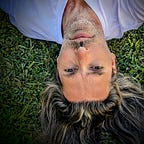Product Engineering — 4/4: Wrong Jungle
Many projects get killed far too early. This is emotionally draining and an unnecessary waste of time, money and energy. Do you remember being part of such an experience where you found yourself in the rubble of a project and you realised that the bold vision you and your team had was shattered?
This is why most people react with careful project planning, using great tools and methods like Design Thinking, Theory U, Design Sprint, Scrum, Kanban, etc in order to be successful. They are right. These tools are really good when used at the right time and in the right setting.
But they fail miserably by creating the right setting and preparing everything to be ready at the right time. What do they miss?
Let me use a story out of Stephen covey’s classic book The 7 Habits of Highly Effective People:
Envision a group of producers cutting their way trough the jungle with machetes. They’re the producers, the problem solvers. They’re cutting through the undergrowth, clearing it out.
The managers are behind them, sharpening their machetes, writing policy and procedure manuals, holding muscle development programs, bringing in improved technologies and setting up working schedules and compensation programs for machete wielders.
The leader is the one who climbs the tallest tree, surveys the entire situation, and yells, “Wrong jungle!”
But how do the busy, efficient producers and managers often respond? “Shut up! We’re making progress.”
The managers and producers are doing the right thing for the context they were hired for. Let me explain this with the core image Roger Martin, Dean of the University of Toronto’s Rotman School of Management uses in his research, the knowledge funnel.
Every organisation, every project starts out with a lot of unknowns. This is called the mystic phase. You explore options, try to make sense and when slowly but surely the first patterns start emerging you have entered the second phase, the heuristic phase.
Now you know that some things are working, you don’t know exactly how, but soon you will. Once you have found out how things work exactly, you move forward to the third phase, the algorithmic phase in which you can now begin to turn your product into something repeatable. A new organisation or a new product is born.
From now on the purpose of the entire organisation becomes to optimise this process in order to create higher margins and perform better in the market.
This is the job of the producers and the managers. And from this perspective they are doing the right job. Their job is to protect the organisation from anything unpredictable and costly.
But once you have the requirement to come up with a new product within such an organisation — or any other system for that matter — the approach of the managers and producers usually fails.
Yes, they have adopted really useful methods like I mentioned earlier, Design Thinking, Sprint, LEAN and all the rest. So they apply the algorithmic thinking to the approach and start churning away highly efficiently.
Unfortunately, most of the time, they are in the wrong jungle. In fact as you can read in the study: “Corporate foresight and its impact on firm performance: A longitudinal analysis”, Future-prepared firms outperformed the average by a 33% higher profitability and a 200% higher growth. WOW.
Building on our experience in building for-profit projects, products and companies for the last twenty years — for ourselves and with startups and corporates, we decided to solve this situation with an easy method that can be applied and adapted to almost any budget and organisational constraint.
So, in Product Engineering we add one checkbox to the equation: We make sure, we’re in the right jungle before we start.
This is a simple, two step process:
In step one — “DESIRABLE STATE MODELING” we help a team to become very very clear on what their desired effect in the system they are addressing is. This system can be anything between a team, a product, a family, an organisation or a planet. This is based on the ideas of Frederic Vester, a physicist and member of the Club of Rome who proves in this book “The art of interconnected thinking” that any complex system can be described with roughly forty parameters.
In step two — “ADAPTIVE WORK MODELING” we build on the research on leadership of Harvard Professor Ronald Heifetz and help a team to understand the work the main stakeholders of a system have to go perform in order to get from the current state of the system to the desirable state of the system.
Based on this understanding the team can now define informed hypothesis founded in deep understanding of the system they are working with — AND unleash their productivity magic with all the tools they have at their disposal.
That’s all there is to it. What we offer is a simple, straightforward solution to giving you the confidence that you know you are in the right jungle and that your project is on a good track.
If you are planning to start any kind of project in the near future, don’t forget to reach out to us so you can set the tracks in the right direction right from the beginning. This will be the single most valuable thing you can do for your project because it will unlock unlimited potential for your team once you have mastered this approach. You will look back in wonder at the mysterious ways past projects made their most fundamental decisions and you will feel freed from the burden of the subconscious nagging that tells you, you might be on the wrong path.
